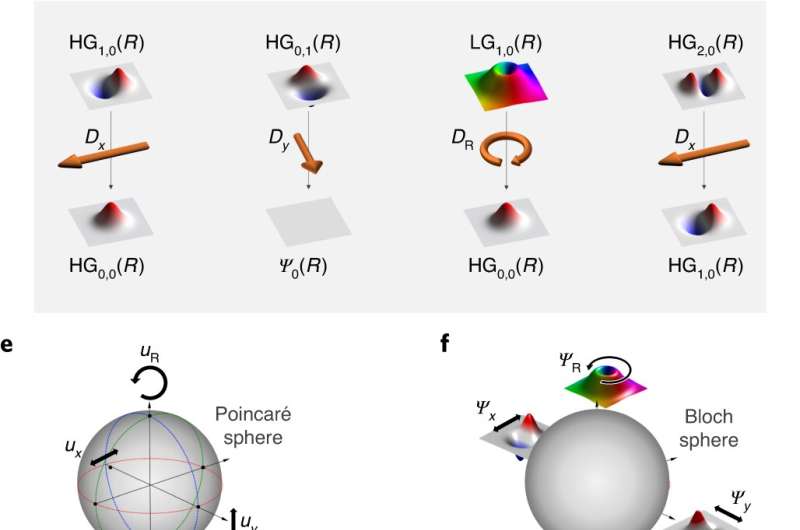March 10, 2021 report
A theoretical path to polarized electron-beam nano-spectroscopy

A trio of researchers from the University of Göttingen, Université de Technologie de Troyes and Université Paris-Saclay, has developed a theoretical path to polarized electron-beam nano-spectroscopy. In their paper published in the journal Nature Physics, Hugo Lourenço-Martins, Davy Gérard and Mathieu Kociak, outline a theory that involves establishing a relationship between polarized optical spectroscopy and scattering of free electrons. David Masiello with the University of Washington has published a News & Views piece in the same journal issue outlining the work by the researchers.
Electron spectroscopy is used to study the electronic structure of atoms and molecules. It can also be used to study the dynamics of such structures. The technology is based on analyzing the energies emitted by electrons. But as Masiello notes, an issue with electron spectroscopy is that without polarization, it is not able to provide the same sort of functions as optical spectroscopy. In this new effort, the researchers have found a relationship between optical spectroscopy (that is polarized) and the scattering of free electrons—a finding that suggests the possibility of polarized electron-beam nano-spectroscopy. To find this relationship, they focused their efforts on the dual opposing limits that occur during scattering of vortex electron beams that have nonlocalized targets. They began by taking a look at the wide-waist limit and then at the narrow- waist limit (where the laser was very clearly focused). They then moved on to an analysis of inelastic electron scattering under various scenarios. In so doing, they found that virtual photons are swapped when a free-electron vortex beam is fired at a target, revealing a connection between inelastic scattering of scalar electron waves and polarized optical spectroscopy. They then came up with a mathematical formula to describe the polarized electron-energy loss signal, which they used to derive the probability of energy loss.
The result of their work showed that energy loss during spectroscopy allows for measuring the polarized electromagnetic density of states (the spin state in particular)—and that suggests that energy loss in such systems can be used to address issues with nano-optics, possibly leading to polarized electron-beam nano-spectroscopy.
More information: Hugo Lourenço-Martins et al. Optical polarization analogue in free electron beams, Nature Physics (2021). DOI: 10.1038/s41567-021-01163-w
Journal information: Nature Physics
© 2021 Science X Network





















